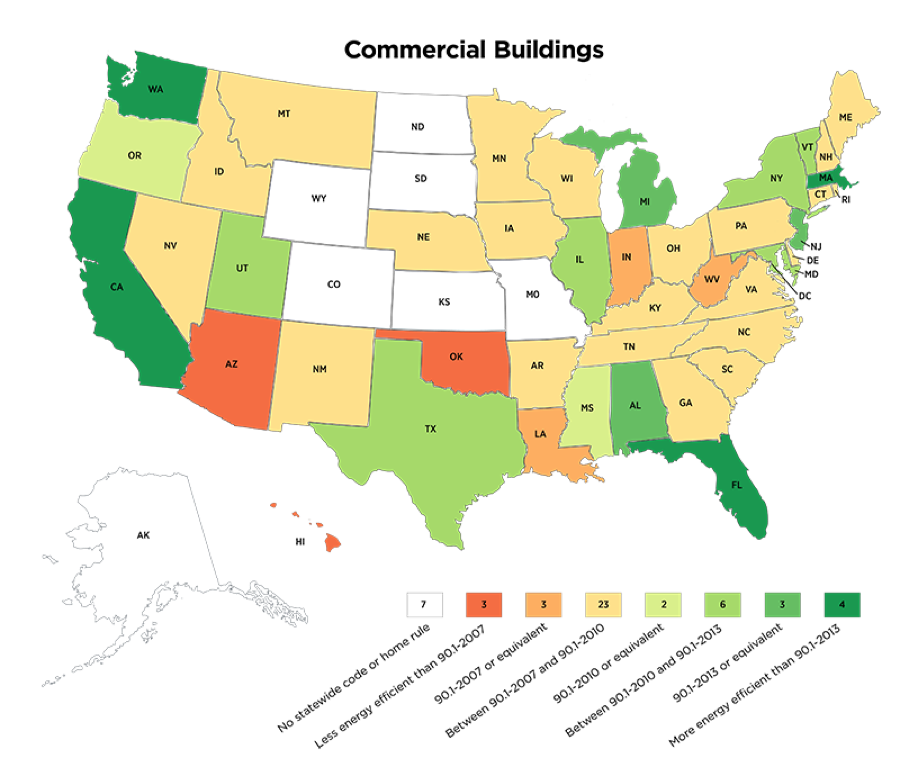The State of LEED: LEED, IgCC, and the IECC.
While Leadership in Energy and Environmental Design (LEED) has remained the leading green building certification system for decades, competing certification systems are challenging the pre-eminence of LEED. In our last blog, we highlighted some of the new challengers to LEED. Today, we compare LEED to its code cousins, the International Green Conservation Code (IgCC) and the International Energy Conservation Code (IECC)
One of the primary challenges for LEED today is the perception that many local building codes are catching up to or exceeding the energy requirements of this building rating system. As energy conservation is one of the primary benefits of the LEED process, this has become an issue. Green building certifications like LEED feel like “one more thing” for owners to contend with when they are placed on top of already-strict local codes. Locally, Maryland and Washington, DC routinely adopt current versions of the building codes, including the International Energy Conservation Code (IECC). Additionally, both jurisdictions have adopted the International Green Construction Code (IgCC), as have other local jurisdictions.
The IgCC is an overlay code and acts similarly to LEED in addressing site, water, energy, materials and indoor environmental quality without the fees associated with LEED registration and certification review. Currently, many States use the 2015 code set and some are about to adopt the 2018 codes. The requirements of the 2015 IECC exceed the energy prerequisite requirements under LEED v4, contributing to a perception that LEED is falling behind. While USGBC is likely to make an adjustment to the energy credit requirement when adoption of the 2018 code set begins to occur, a disparity is likely to remain.
One argument we hear for not certifying a project under LEED is that, since the building code exceeds the LEED energy prerequisite, LEED is unnecessary. While codes that exceed LEED minimum is true in some regions, it isn’t the case everywhere in the United States (see map). Some jurisdictions throughout the United States reference older building and energy codes, some as far back as 2006. The current LEED energy prerequisite for New Construction, Version 4 is a 5% energy use reduction over ASHRAE 90.1-2010. The current Energy Conservation Code 2015 references ASHRAE 90.1-2013 which can demand greater energy efficiency than the LEED prerequisite for some building types. As mentioned above, state and local jurisdictions are about to upgrade to the IECC 2018, which pushes code-compliant energy performance requirements even higher for locations where these codes are adopted.
Through the LEED rating system the US Green Building Council (USGBC) aims to provide an entry point for green building design and construction nationally and internationally. We have mentioned that not all locations have adopted the current version of the energy code and international codes vary widely as well. In locations with lower energy standards, LEED energy prerequisites are still above code requirements but not so much as to deter participation in pursuing a green building certification. Also, no one is keeping anyone from exceeding minimum energy requirements, which is the beauty of LEED. LEED rewards exceptional energy performance with additional points; up to 18 for 50% energy reduction in new buildings.

In most cases, high energy scores can lead to a Gold certification. Exceptional energy performance provides the same result whether the project is pursuing a certification or not however, LEED provides an incentive through its assignment of points for increasing levels of energy performance. Higher energy scores may also lead to a higher final certification level. Anyone who has worked on a LEED project can attest to owners and team members asking, “What will it take to get the next energy point?” or “What will it take to get to the next LEED level?”
It cannot be stressed enough that energy is not the only measure of a green building, and in this regard, LEED shines. Having established the five major categories of site, water, energy, materials, and indoor environmental quality, LEED creates a balanced assessment of a project’s environmental and health impacts. While the IgCC address these categories as well, the ability of local jurisdictions to modify the code when they adopt it provides varying definitions of green building according to each of those jurisdictions. Review and enforcement of the code by each jurisdiction varies widely further muddying the measure of a code compliant green building. LEED is a standard set of credits and requirements. Yes, we have heard and have participated in complaints over the inconsistencies between review teams. Though onerous, these can be dealt with through a defined process of appeals. Though not perfect, LEED remains the most consistent measure of a green building and the US Green Building Council is constantly seeking to improve the standard and the administration of that standard.
Is LEED Still Relevant?
This is Part-Two in a four-part series on LEED. In our next blog in this series, we’ll be discussing some common mis-perceptions of the LEED rating system.

